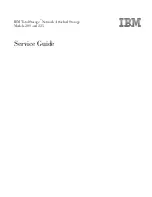
93
Configuring DAR
The feature is applicable only to IP packets.
The following matrix shows the feature and router compatibility:
Feature HSR6602 6604/6608/6616
DAR No
No
Overview
The Deeper Application Recognition (DAR) feature identifies packets of dynamic protocols like
BitTorrent by examining Layer 4 to Layer 7 content other than the IP header. The feature helps
service providers and businesses limit aggressive bandwidth use by applications like BitTorrent to
ensure fairness and network performance.
BitTorrent is a P2P file sharing communications protocol, which enables personal computers to
directly exchange data or services. P2P has been widely used for content (such as audio and video)
file sharing. It represents a large amount of bandwidth on the Internet.
DAR can limit, block, or manipulate identified application traffic depending on your configuration,
guaranteeing key applications high priority treatment and protecting customer investment.
Configuring DAR for P2P traffic recognition
DAR uses a .mtd P2P signature file for P2P traffic identification. It compares the content of every
incoming packet with the signature file. If a match is found, DAR processes the packet as a P2P
packet.
Loading the P2P signature file
To identify P2P traffic, first load the P2P signature file. Make sure that the signature file is placed in
the root directory. The system can load a signature file only from the root directory.
To load the P2P signature file:
Step
Command
Remarks
1.
Enter system view.
system-view
N/A
2.
Load the P2P
signature file.
dar p2p signature-file
filename
By default, no P2P signature file is loaded.
Configuring a P2P protocol group
You can configure a P2P protocol group to include multiple P2P protocols. By referencing this P2P
protocol group in a traffic class, you assign traffic of these P2P protocols to the class and implement
the same QoS policy.
To configure a P2P protocol group:
















































